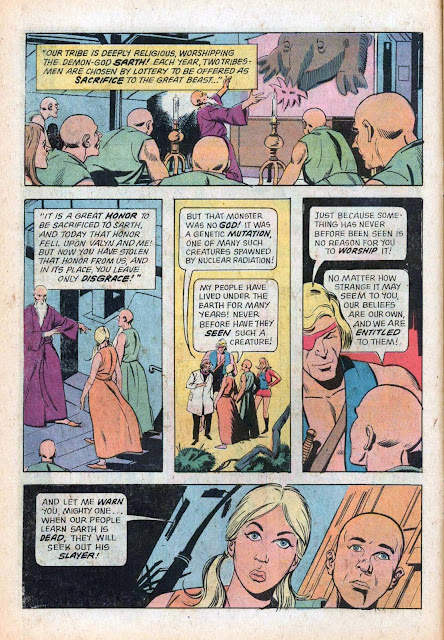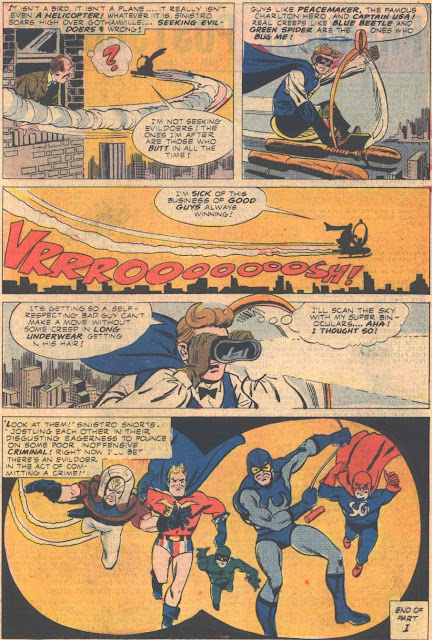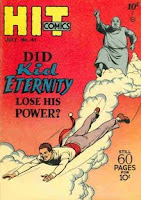21, 22, and 32 were reprint issues.
1970s Mighty Samson Revival Writers and Artists
| Mar/74 | #23 | In the Country of the Blind | w: Gerry Boudreau |
| a: José Delbo | |||
| Jun/74 | #24 | The Manchu of C'nal Street | w: Boudreau |
| a: Delbo & Jack Abel | |||
| Sep/74 | #25 | The Fugitives | w: Boudreau |
| a: Delbo & Abel | |||
| Dec/74 | #26 | The Pollution People | w: Boudreau |
| a: Delbo & Abel | |||
| Mar/75 | #27 | Noah's Ark | w: Allan Moniz |
| a: Delbo & Abel | |||
| Jun/75 | #28 | Samson's Masters | w: Paul S. Newman |
| a: Abel | |||
| Sep/75 | #29 | Journey into the Past | w: John David Warner |
| a: Abel | |||
| Dec/75 | #30 | The Balloon Gods | w: Arnold Drake |
| a: Abel | |||
| Mar/76 | #31 | The Attack of the Lepidop-Terror | w: Drake |
| a: Abel |
| May/78 | #2 | The Night Glowers | w: Drake |
| a: Don Heck |
The covers of 23, 24, and GK Champion 2 were painted by George Wilson; those of 25-31 by Luis Dominguez.
The Comic Reader 96 (Apr/73) said "...Mighty Samson is returning to the stands in a new title by Gerry Boudreau and José Delbo...", meaning 23. Issues 28-30 contain writer and artist credits. The rest of the credits here are my IDs of the respective styles.
The Grand Comics Database credits Abel with writing 23, nobody with pencilling, and Delbo with inking. The GCD says that art experts see Delbo ghost-pencilling for Abel on 28, but 24-27 (a page from 25 is shown here) are the ones where I see Abel's inks, and they let a lot of Delbo's pencils show through. Abel's style overwhelms 28, if there's anybody but himself to overwhelm.


















